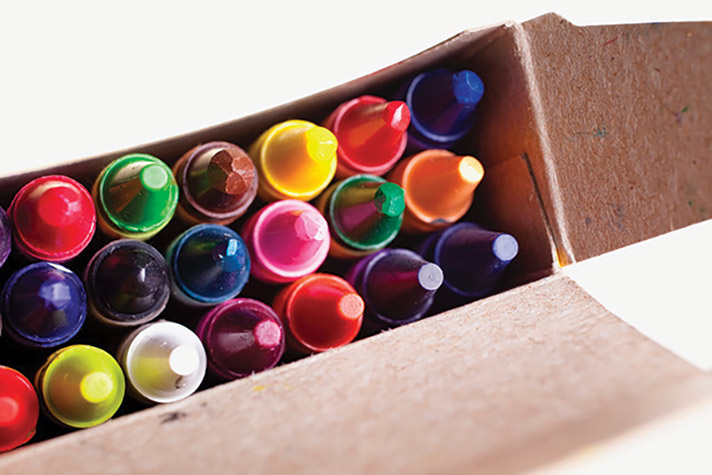Soul Matters – November 2022
It is early October as I write, and the weather is sublime. The light is low and the leaves just beginning to change. I love autumn, yet this beautiful season always elicits a soft sort of sadness in me, a feeling I can only call melancholy.
I am, by nature, a melancholy person. After years of judging it, hating it, and trying to change it, I now embrace, if awkwardly, my melancholia. I see it as integral to my personality, helpful for my work. Fun, it is not, nor is it easy. In my next life, in addition to looking like Jennifer Lopez, I’m going choose a different nature, something lighter and easier. But for now, I accept my fate. I don’t like it, but I accept it.
Not that I have much choice.
Melancholy is a temperament. It means “mournful,” “soberly thoughtful,” “pensive.” If it were a crayon, melancholy would be Cornflower Blue rather than Midnight Blue or Pitch Black. Melancholy is the condition of being exquisitely sensitive. It is the experience of taking in all of life at once, without excluding the painful or uncomfortable.
The term “melancholy” fell out of fashion some decades ago; given its meaning, it’s little wonder that the word disappeared from our vocabulary. Americans can barely tolerate introversion, much less withstand a good bout of melancholy or, God forbid, a full-fledged depression. Instead, we medicate these conditions, an act that implies that there is something wrong with entertaining these dark visitors, as though such states of mind and soul were invading viruses that, uncontained, might cause a widespread and disastrous pandemic of sad and unproductive people.
Americans have a seeming inability to tolerate that which is not bright or pretty or easy. We eschew the dark side of life, the shades of blue and gray. We do not see life as it actually is: happy and sad, both; bright and dark both. We split-off the difficult believing, mistakenly, that if we play our cards right, we can avoid the messier, less pleasant aspects of life.
It is human nature to gravitate to that which is pleasurable and avoid that which is painful. I understand this point of view. I do. I don’t want to get wrinkles. I’d like to be happy-go-lucky. I don’t want to feel everything as intensely as I do. How much nicer would it be not to feel everything so exquisitely all the time?
Nicer, yes, but not normal. Not for me. Melancholy is the simultaneous experience of the agony and the ecstasy of life. The Taoist Yin-Yang symbol is the imagistic representation of this tension. Light and dark flow eternally and seamlessly into one another, each containing the seed of the other within its center. They dwell in each other’s embrace. Melancholy is the experience of entertaining this seeming duality. It is the sadness in the midst of joy. It is sensing the winter even while reveling in autumn’s beauty. It is the joyful mourning of watching my children disappear into independent adults.
I have a friend who is, by nature, a Sunny Yellow crayon. She suffers from multiple, chronic conditions which, in my book, entitles her to be a darker hue—gratis. Yet she is perpetually, unnervingly cheerful. Yes, I’m a bit envious, but mostly I’m baffled. Her nature is completely confounding to my own. But I remind myself that not everyone can be Cornflower Blue. Her nature balances and compliments mine. She is the yang to my yin.
Despite a cultural conditioning that attempts to eschew the difficult and painful, the fact remains that I don’t want a box of crayons containing only Fire Engine Red and Optimistic Orange. Blue, green and even black are not only necessary but desirable for a complete palate and a full life.
Each of us, inhabiting our true natures, adds to the complexity, balance and nuanced layering of life. And though I may not have an easy time being Cornflower Blue, it’s actually a pretty nice color. And it’s nice to know that it wouldn’t be a complete box of crayons without me.
*The original version of this column was published in 2010. After it appeared, I received a very special gift: a 64 pack of Crayola Crayons which, when opened, revealed 64 Cornflower Blue crayons. It is to this day one of the more meaningful gifts I’ve ever received.
KATE INGRAM, MA, CSBC, always wanted the 64 pack of Crayola Crayons (with sharpener!) but only ever got the 16 pack, which may be part of the reason she became a therapist. She is also an author, counselor, and coach specializing in loss, grief and major life transitions. To schedule an appointment or to find out more, go to kintsugicoaching.com or write kate@kintsugicoaching.com.

 KATE INGRAM, M.A., is a counselor, soul coach and author. Her first book, Washing the Bones: A Memoir of Love, Loss, and Transformation about her journey through grief and depression to spiritual awakening, was awarded a 2014 Nautilus Silver Medal and a 2014 Indie Book Award. To receive free monthly inspiration or to find out more about her work, please visit
KATE INGRAM, M.A., is a counselor, soul coach and author. Her first book, Washing the Bones: A Memoir of Love, Loss, and Transformation about her journey through grief and depression to spiritual awakening, was awarded a 2014 Nautilus Silver Medal and a 2014 Indie Book Award. To receive free monthly inspiration or to find out more about her work, please visit